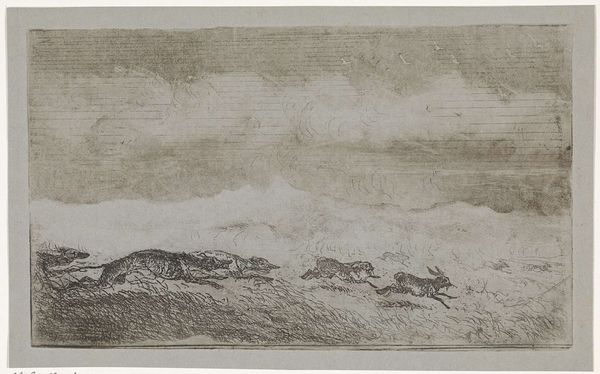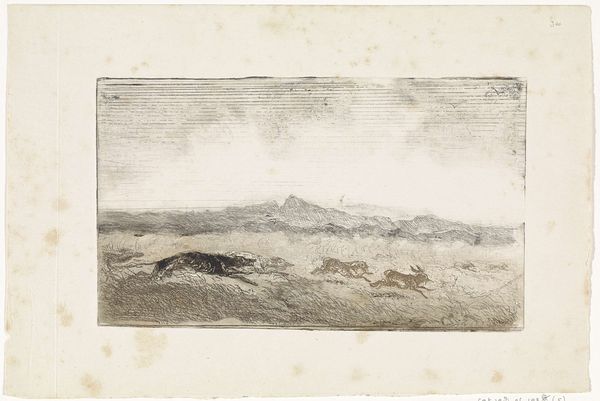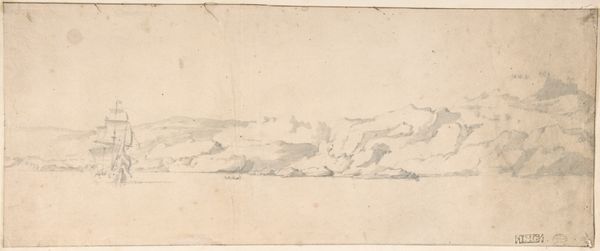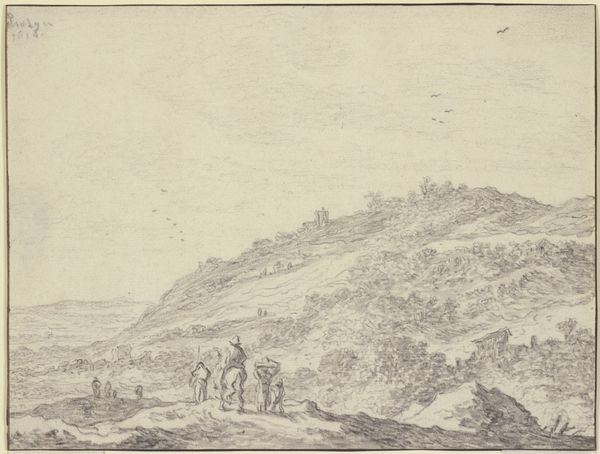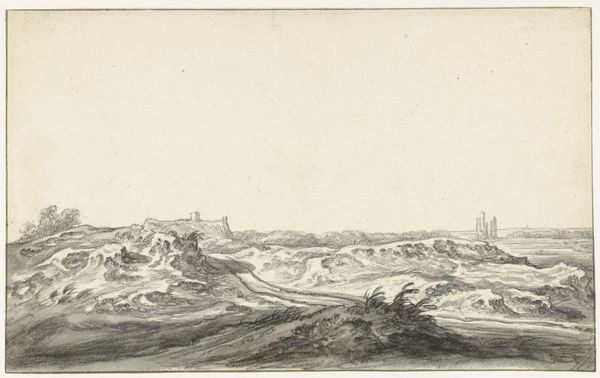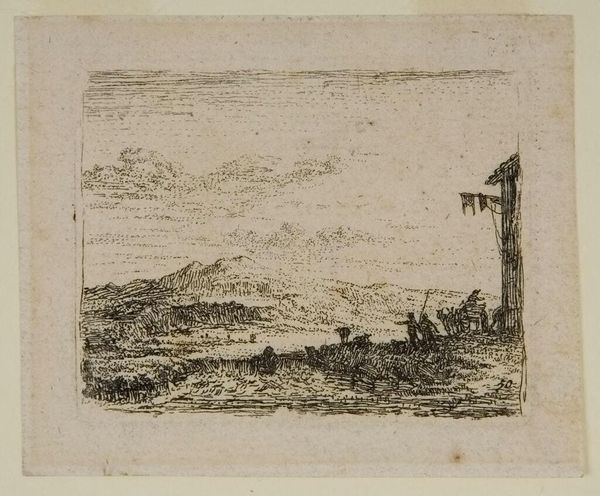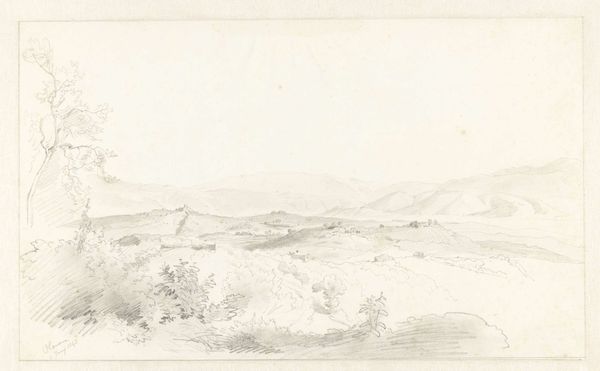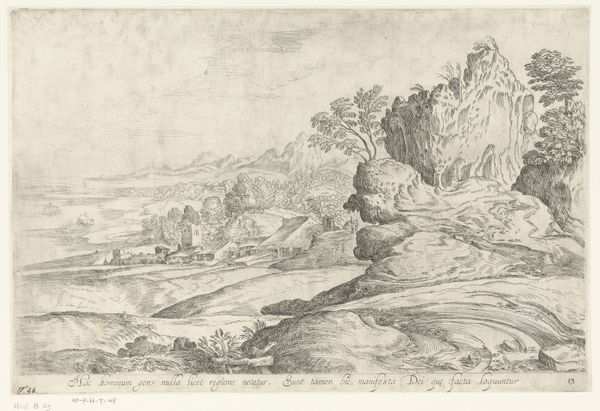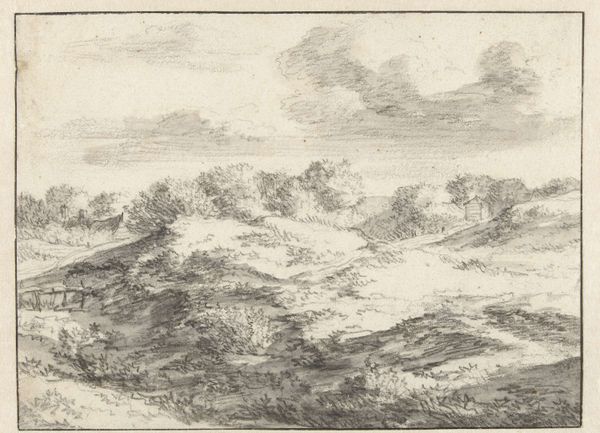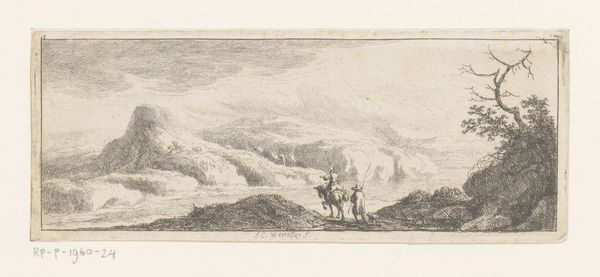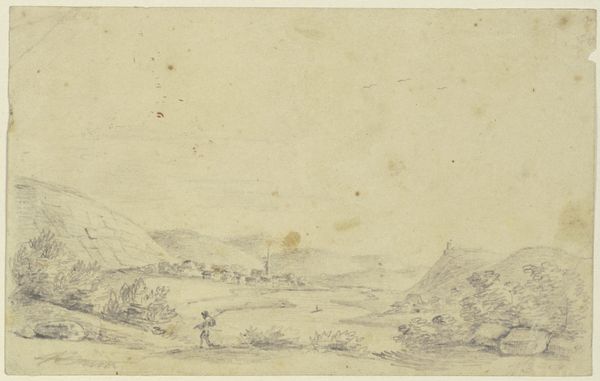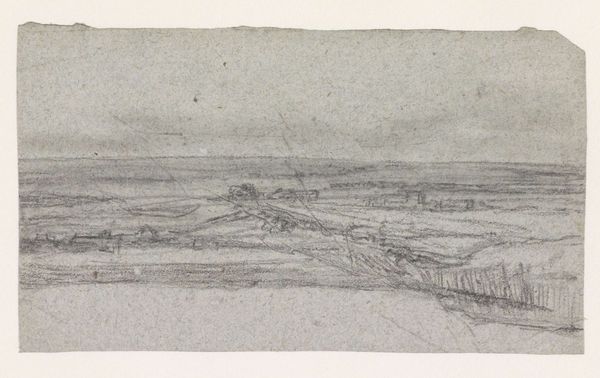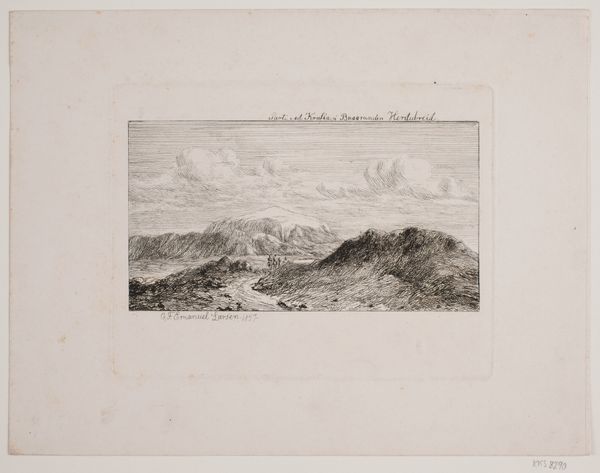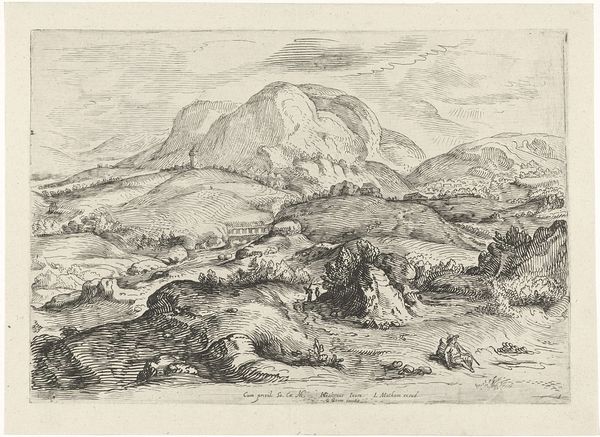
etching
#
etching
#
landscape
#
etching
#
realism
Dimensions: height 118 mm, width 199 mm
Copyright: Rijks Museum: Open Domain
Editor: Here we have Johannes Tavenraat's "Hazenjacht," an etching created sometime between 1819 and 1881. The starkness of the lines creates a dramatic chase scene. What strikes you about it? Curator: Immediately, I see the etching process itself as central to its meaning. Tavenraat's choice of etching—a process involving acid, metal plates, and skilled labor—isn't accidental. It speaks to a particular mode of production. Consider the cultural moment: as industrialization accelerated, hand-made techniques were either fading into obscurity or imbued with new cultural value. What impact did this tension have on how audiences viewed images like this one? Editor: That’s fascinating! I hadn't considered the socio-economic aspect. So, you are saying that choosing an etching was less about aesthetic preference, and more about engaging with questions of labor and the value of craft? Curator: Exactly. This wasn’t just a simple aesthetic choice, it was a declaration about where artistic value resides during industrial transformation. How does the use of etching affect the reception of this image compared to, say, a mass-produced lithograph? Editor: The limited run makes it feel... special, almost an artifact from a vanishing era of hand production. The scene, the landscape, and the active "hunt" could all symbolize something related to that socioeconomic context? Curator: Indeed! Think about hunting itself – what kind of labour is this image portraying, and how does this play into systems of land ownership and class? Whose labour is missing here? How are humans figured (or not figured) into the ‘landscape’ as a result of economic imperatives? Editor: I guess, now, thinking of that contrast that it helps see the themes more vividly. Thank you, I learned a lot by analyzing this work in a new perspective. Curator: Absolutely, viewing art through its production methods lets us engage with its context far more deeply.
Comments
No comments
Be the first to comment and join the conversation on the ultimate creative platform.
